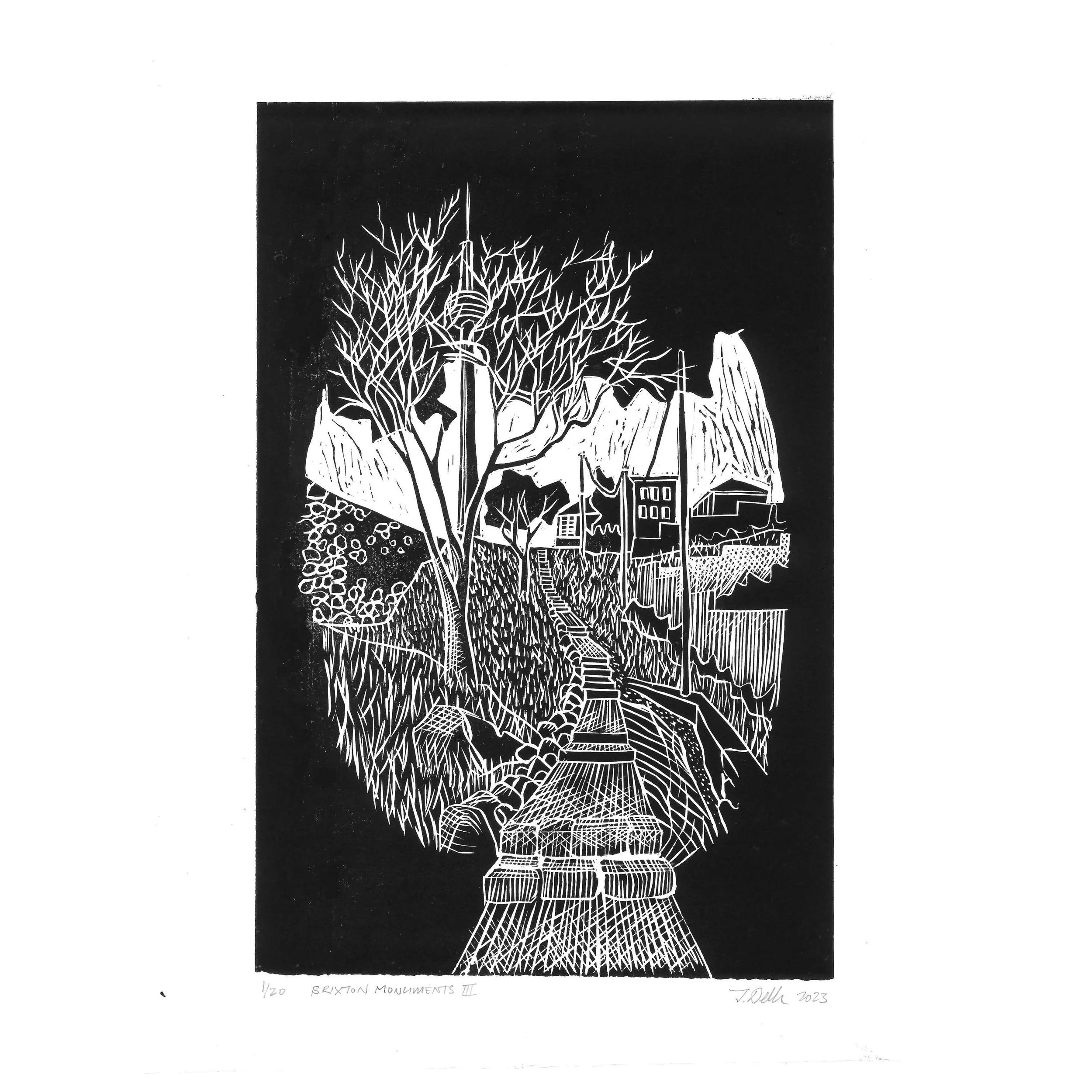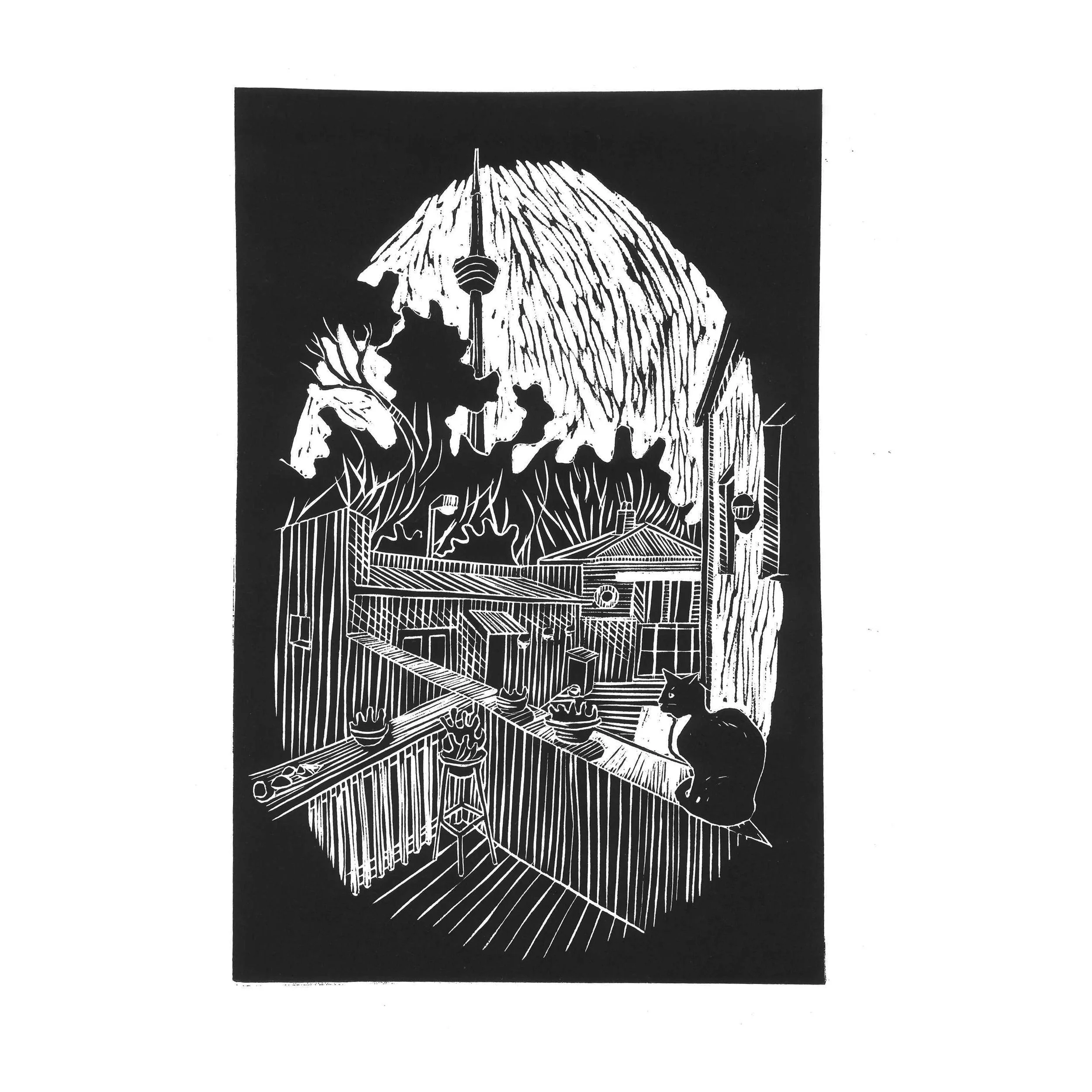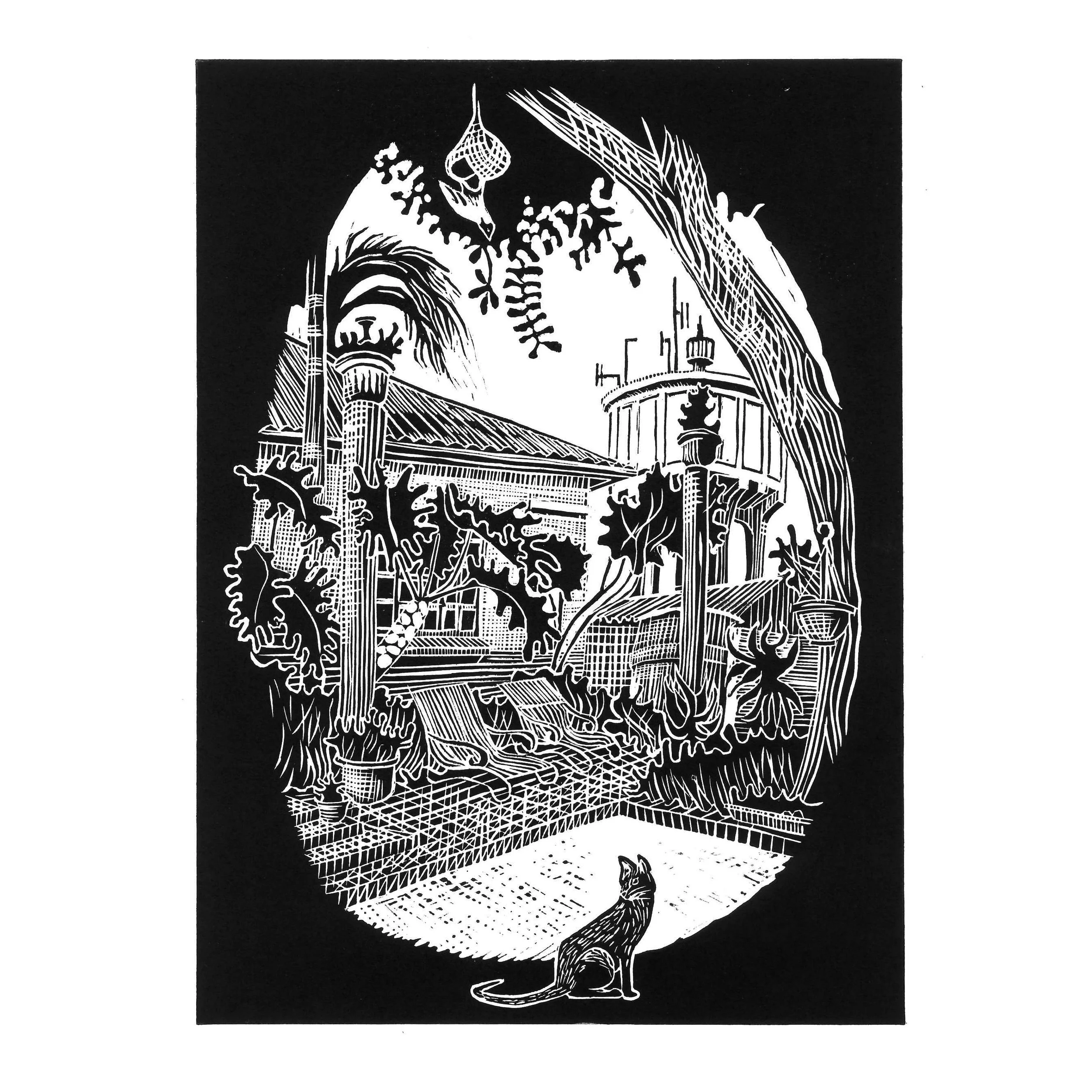
Brixton Monuments:
Linocut Series
-
![Linocut by architect of Brixton, JHB Monuments by architect, Thorsten Deckler]()
Brixton Monuments I
This is the first lino cut in the series and how it all came about. It was used to raise money for re-painting the small corrugated iron worker’s cottage cum corner shop on Fulham and Wimbledon Road.
The cottage is one of few national monuments that represents Johannesburg’s working class from the early days of the gold rush. Although Brixton was a white suburb under Apartheid, today it houses a mix of races and income groups.
The recycler in the foreground is a common figure in many Johannesburg neighbourhoods and the TV tower in the background is visible from almost anywhere in the city.
-
![Linocut by architect of Brixton, JHB Monuments by architect, Thorsten Deckler]()
Brixton Monuments II
This building used to be a small convenience store run by a Chinese lady called Pi. When she retired, the building became an artist studio called SHADE, where Tamzyn Botha collects materials from local recyclers to be re-used.
The figure in the foreground is Percy, one of the founders of the Sentech Croozers, a group of boys who build custom bikes.
The taxi speeds down Caroline Street towards downtown. Rumour has it that the Apartheid government envisioned Caroline Street as an escape route should the city centre erupt in unrest.
-
![Linocut by architect of Brixton, JHB Monuments by architect, Thorsten Deckler]()
Brixton Monuments III
The other day I was running up and down the Brixton steps when a man dressed in construction overalls flew past me, jumping over multiple steps at a time.
The stone steps provide pedestrian path up the Brixton ridge and are a rare pre-democracy concession to the workers who serviced the white suburbs of Johannesburg.
Early in the mornings and evenings the steps are busy with people walking to and from work or exercising.
-
![Linocut by architect of Brixton, JHB Monuments by architect, Thorsten Deckler]()
Brixton Monuments III
-
![Linocut by architect of Brixton, JHB Monuments by architect, Thorsten Deckler]()
Brixton Monuments IV
This is a view into one of the service lanes in Brixton which were used to collect human waste before Johannesburg had a waterborne sewerage system. The ‘night soil’ was collected in buckets from outhouses accessed via the alley and transported away in donkey carts.
Today the alleys are raw and somewhat wild spaces where vegetation grows unchecked and people have constructed walls and gates using recycled or unfinished materials.
The alleys give access to cottages and backyards rooms. They have an intimate scale and seem to lie dormant, waiting to come alive with kids’ games, small shops, even bars.
The creature in the foreground is a Parktown Prawn, a terrifying invader of Johannesburg homes.
-
![Linocut by architect of Brixton, JHB Monuments by architect, Thorsten Deckler]()
Brixton Monuments V
This scene captures a moment of the Brixton Light Festival held in September 2023.
The large model ships were made by David Gara and were worn as headgear in a performance put on by the Well-Worn Theatre Company. For days before the festival people rehearsed moving like ships rolling on high seas.
The lines on the road mark the watershed that runs all the way up the African continent from where water makes its way either into the Indian Ocean or the Atlantic.
In the background is the Brixton Tower lit up with moving patterns projected from someone’s backyard.
The glowing Ibis (Hadeda) was made, carried and operated by Alistair Findlay at the head of the festival parade.
-
![Linocut by architect of Brixton, JHB Monuments by architect, Thorsten Deckler]()
Brixton Monuments VI
This is our backyard with our cat, named Brixton. I made this lino cut on the day she died.
My office is in the house with the round window. I walk to work every day, exercise in the park or at the steps. I walk to the shops and to friends’ houses.
Brixton properties are small and the houses sit close to the street and many house have porches. The tightness and walkability of Brixton seems to encourage people to socialise in the street and to get to know each other.
-
![Linocut by architect of Brixton, JHB Monuments by architect, Thorsten Deckler]()
Brixton Monuments VII
Description goes here -
![Linocut by architect of Brixton, JHB Monuments by architect, Thorsten Deckler]()
Brixton Monuments VIII
Description goes here









